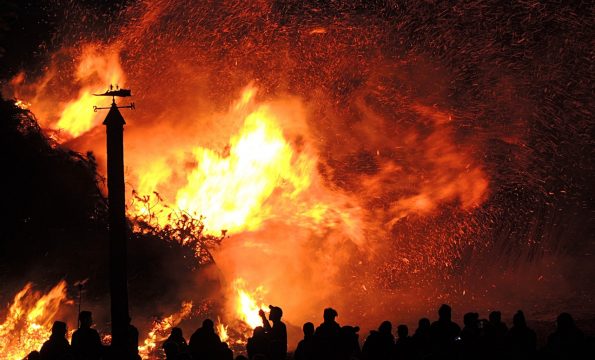The desolation was different than usual. “Mature trees stood barren, lifeless and with half of their bark stripped off. There wasn’t any soil, just hard-packed dirt. He saw flipped-over cars and shipping containers. Broken power lines. A gas pipe wrapped around a tree.
“The damage came [from] a fire tornado, for lack of a better term, ripped through this area of Northern California, about a mile and a half away from downtown Redding, population 91,800-plus.” As the Carr fire picked up steam, the rare and horrific phenomenon, known as a fire tornado, which formed under unusually extreme conditions, left the area much worse than other, more usual fires. There’s not a living branch wherever the fire tornado stuck.
“The Shasta County-area fire has killed at least six people, destroyed more than 1,000 homes and buildings and scorched 112,888 acres of land, making it one of California’s largest and most destructive fires in history. Record-breaking temperatures have helped fuel a number of aggressive and fast-moving fires across the Golden State this year. But the fire tornado spawned by the Carr Fire is perhaps the most extreme wildfire phenomenon officials have seen in years.
“The people I look up to in this profession have told me that aside from one a few years ago, they haven’t seen any,” says Scott McLean, deputy chief at California’s Department of Forestry and Fire Protection, or Cal Fire. “It’s that rare.”
“Some fire scientists would roll their eyes at the term ‘fire tornado,’” says Daniel Swain, a climate scientist at the University of California, Los Angeles. “But they aren’t rolling their eyes on this one.”
“More common are ‘fire whirls,’ which can grow up to 100 feet and are fairly common in aggressive wildfires. But, even though fire whirls can certainly create problems for firefighters, they’re much smaller and weaker than fire tornados — research from the National Oceanic and Atmospheric Administration (NOAA) in 1978 says fire tornadoes can ‘lead to extreme hazard and control problems,’ grow up to 1,000 feet in diameter and spin up to 90 miles per hour.
“Fire tornadoes can form when heat from extreme temperatures and wildfires makes the air hot and less dense, experts say. The buoyant hot air can then rise vertically above the fire as fresh, oxygenated air from other areas rushes into what begins to act as a chimney. This column of air above the fire can begin to rotate and start spinning cyclically like a tornado. Fire tornadoes are more likely with hot temperatures, lots of dry vegetation that act as ample fuel for fast-moving fires and a lack of strong winds. An aerial view of the fire tornado at the Carr Fire… shows a rotating smoke plume as flames burn throughout the hills and canyons of Shasta County.
“It sounds kind of apocalyptic, but these videos are really, generally very scary,” Swain says. “This is a feature that was generated largely by the intensity of the fire.”
“Some scientists who spoke with TIME considered fire tornadoes a purely anecdotal phenomena — they heard stories and details of these monster storms from their colleagues, but had never seen one for themselves. The newly captured footage, then, is something of a revelation for them.
“The lush environment that stood in the path of the fire tornado is now a desolate, eerie wasteland. But there’s no ash on the ground, it was lifted away.
These calamities are becoming more and more common, but every report of calamity by sea or by land is a testimony to the fact that the end of all things is near. The world is filled with iniquity, and the Lord is punishing for its wickedness. As crime and iniquity increase, these judgments will become more frequent and more marked, until the time shall come when the “earth shall no more cover her slain.” Letter 382, 1908.






Comments